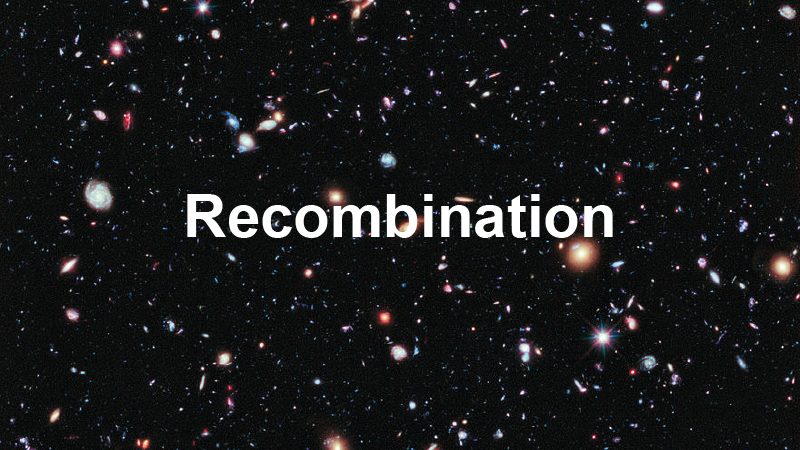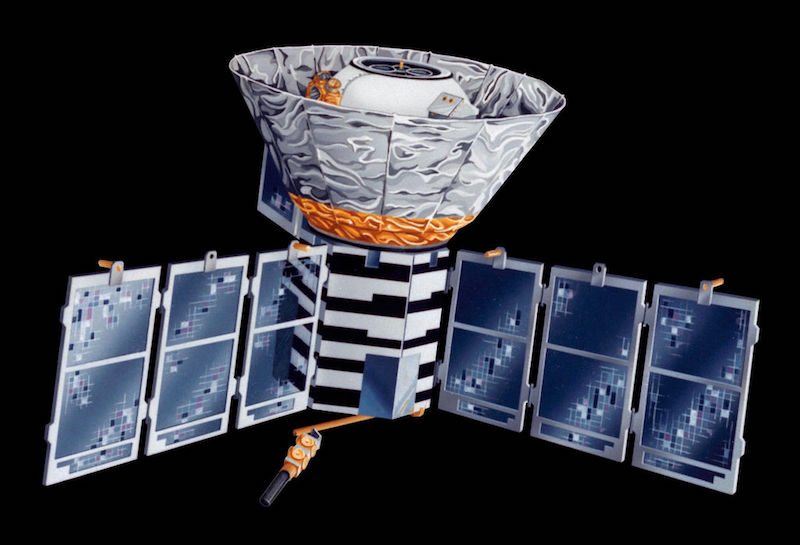Recombination
Episode #4 of the course A short history of the universe
During the first few minutes after the Big Bang, nearly all of the particles and atomic nuclei that would ever exist were created, and then for 377,000 years, they boiled in a sort of soup (a plasma) too energetic for complete atoms to form. This has left no radiation for us to see today because all the photons were constantly being absorbed and re-emitted by other particles. Then something crucial to the evolution of life happened simply because the universe continued to expand and become cooler—most of the electrons and photons were captured by the hydrogen and helium nuclei, forming atoms. This is the meaning of recombination. The remaining photons could fly more freely through space without being absorbed by other particles—they had become decoupled from matter. The universe became transparent.
Those photons that last bounced off particles during decoupling—”the last scattering”—began a 13.8 billion year journey, carrying information about the early universe to human scientists who first received it in 1993 using NASA’s Cosmic Background Explorer (COBE) satellite.
This is the cosmic microwave background (CMB)—a thin, cool ocean of low-energy photons filling the universe that came from the Big Bang. They were high-energy gamma photons when they began their journey, and the universe was still as hot as the surface of the sun (4000 degrees Kelvin, 3726 °C, or 6740 °F)—but the expanding space that they crossed for 13.8 billion years to arrive at Earth has stretched their wavelengths (red-shifted them) so that now they are very cool and the average background temperature of the universe is 2.7 degrees Kelvin (-271 °C or -456 °F), just a little above absolute zero (-273.15 °C or -459.67 °F).
This CMB radiation is the best evidence we have for the Big Bang and the best information we have about the laws of nature during that time. The distribution and frequencies of these cosmic background photons show us the distribution of matter in the universe at the time of decoupling—and what it was made of (not counting dark matter). The very slight departures from smoothness (anisotropies) in the CMB are a map of the slightly uneven distribution of matter in the universe at that time. From that time on, these anisotropies would be magnified by gravity, attracting more and more gas, and eventually become all the galaxies, quasars, clusters of galaxies, and larger structures in the universe.
Scientists have been able to use the CMB data to test our fundamental theories of physics. Tiny differences between theories can predict noticeable differences in the CMB. Astrophysicists Avi Loeb and Tom Abel have been simulating the early universe on computers. If their models were correct, their simulations would be consistent with what they see in the COBE data. They are not. This means that the standard model of physics is definitely incomplete—and many other models can be ruled out by the data. In other words, the large-scale structure of the universe can answer many questions about nature at the smallest scale, just as particle accelerator experiments tell us a lot about cosmology!
Recommended book
“Hubble’s Universe: Greatest Discoveries and Latest Images” by Terence Dickinson
Share with friends


